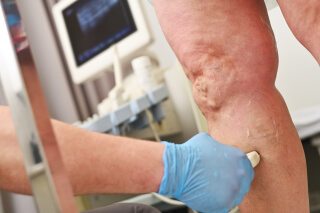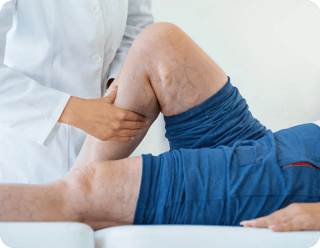You’re not alone—and you’re not without options.
Whether you’ve just been diagnosed with Deep Vein Thrombosis (DVT) or you're worried about symptoms, we’re here to help. DVT can feel overwhelming—but with the right care, it’s manageable and treatable. At Endovascular Consultants of Delaware, we use advanced, minimally invasive procedures that target clots with less downtime, less risk, and more peace of mind.

DVT is a blood clot that forms in a deep vein—usually in the legs. Left untreated, it can lead to serious health problems like a pulmonary embolism or long-term damage to your veins.
If you’re experiencing any of these symptoms, don’t wait. Early treatment can prevent complications.
DVT can cause leg pain, swelling, and fatigue, making walking or standing difficult. It may limit daily activities, disrupt sleep, and affect your independence. Without treatment, it can lead to serious complications like ulcers or blood clots in the lungs.


At Endovascular Consultants, we specialize in image-guided, minimally invasive treatments that dissolve or remove clots without the need for major surgery. Many of our patients go home the same day and are back on their feet sooner than they expected.
Our treatment options may include:

Choosing a care team is about more than credentials—it’s about trust, compassion, and results. Here’s why patients choose EVC:
Every treatment plan is personalized based on your health, risk factors, and goals.
Many patients don’t realize they have options beyond traditional surgery. At EVC, our team of interventional radiologists treats vascular issues—including DVT—through tiny incisions, using imaging guidance to target clots directly.
Compared to vascular surgeons, who may perform more invasive procedures like bypasses, our techniques often offer:
If you’ve been told surgery is your only option, come see if a minimally invasive solution is right for you.

Dr. Mark J. Garcia is a board-certified, world-renowned interventional radiologist with over 25 years of experience. He has held leadership positions across some of the nation’s top vascular centers and medical device companies. Known for his pioneering work in minimally invasive treatments, Dr. Garcia is committed to improving outcomes for every patient he meets.
You don't have to live like this. Let's explore your options together.